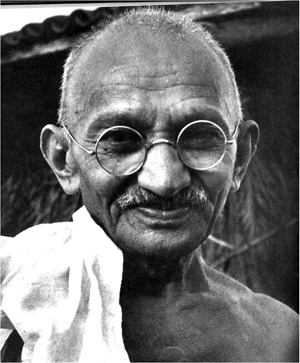
NEW DELHI (AFP) – India has paid $1.1 million to buy a collection of letters, papers and photographs relating to Indian independence icon Mahatma Gandhi, preventing their sale at a planned auction in London.
The archive, which belonged to Gandhi’s close friend Hermann Kallenbach, a German Jewish bodybuilder and architect, was to have gone under the hammer at Sotheby’s on Tuesday.
Sanjiv Mittal, a joint secretary at India’s Ministry of Culture, said the government had paid 700,000 pounds ($1.1 million) for the entire collection, which will be brought to India and housed in the National Archive.
“It was felt that the letters are of importance to study the thoughts of Gandhi on various matters,” Mittal told AFP.
“Since we already have some letters exchanged between Kallenbach and Gandhi, we thought this would help us fill up the gaps in our collection.”
Sotheby’s had put an estimate of between 500,000 and 700,000 pounds on the collection.
Indian historian Ramachandra Guha discovered the letters at the home of Kallenbach’s grand-niece, Isa Sarid.
Indian media reported that the government purchase followed weeks of intense negotiations with Kallenbach’s surviving relatives.
India has in the past complained bitterly about private auctions of Gandhi’s belongings, saying they insulted the memory of a man who rejected material wealth.
Gandhi’s great-grandson Tushar Gandhi welcomed the government’s move to bring the collection to India.
“It’s a significant collection because it provides us with a very close look into a very long relationship between ‘Bapu’ (father) and Kallenbach,” he told AFP.
“These letters belong in the public domain, not in private hands, and I hope the government will make their contents accessible to everyone,” he said.
Most of the correspondence, which spans four decades from 1905 to 1945, is from family, friends and followers of Gandhi, but there are also 13 letters written by him to Kallenbach.
They reference Gandhi’s early political campaigns and the illness of his wife Kasturba.
“She had a few grapes today but she is suffering again,” he wrote in one letter.
In another, written before his return to India from South Africa, Gandhi wrote: “I do all my writing squatting on the ground and eat invariably with my fingers. I don’t want to look awkward in India.”
ADDITIONAL IMAGE OF NOTE


